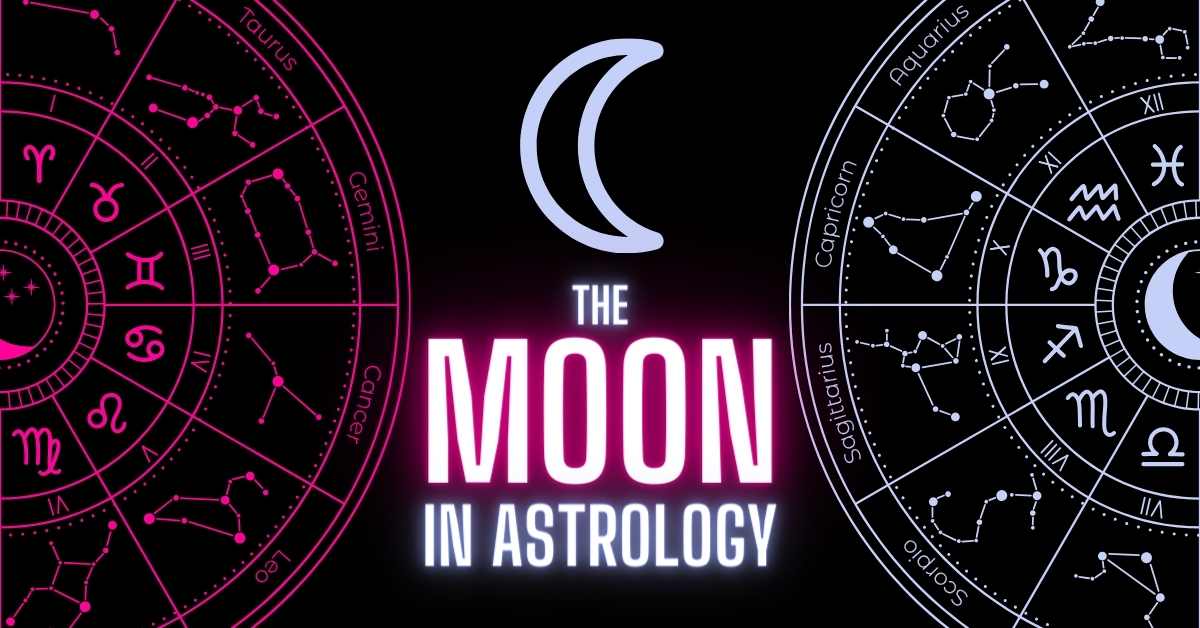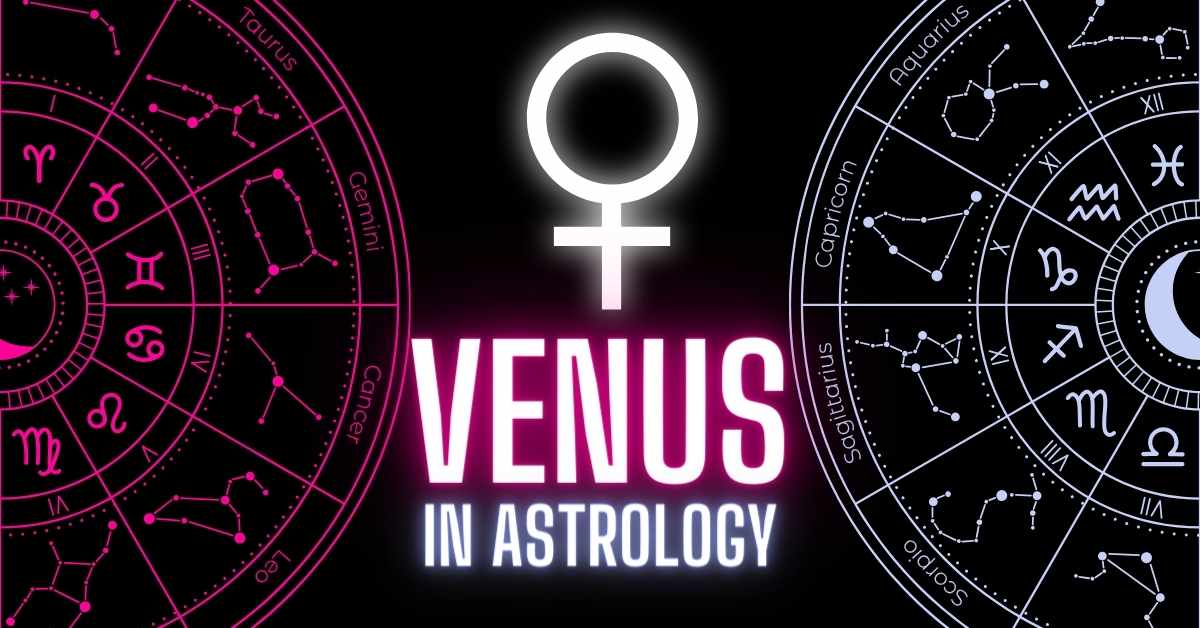In astrology, the Moon is the second most significant entity in the astrology chart. It serves as the lesser light to that of the Sun. It nevertheless holds a crucial role as a representation of our emotions, instincts, and deep-seated reactions. Often referred to as the “lunar” influence, the Moon’s position in the natal chart reflects how we express and experience our feelings. It holds the key to our subconscious mind, revealing our intuitive responses, childhood memories, and emotional patterns.
The Moon also symbolizes our connection to family and the nurturing aspects of life, portraying the way we both give and receive care. It’s not just about our inner world; the Moon’s placement offers insights into how we relate to others, especially within the family unit. The sign in which it is placed tells us the “how” of the moon’s expression. The house in which it is placed, indicates the “where”. From the nurturing and gentle Cancer Moon to the fiery and passionate Aries Moon, the lunar influence helps us understand the fundamental nature of our emotional landscape and reactions to the world around us.
The Moon Symbol in Astrology: ☽
The symbol for the Moon in astrology is a delicate, crescent-like curve that represents the lunar influence on our lives. It appears as a simple crescent with the curve facing right, which symbolizes the waxing and waning phases of the Moon as it moves through its celestial dance. The Moon symbol serves as a reminder of the Moon’s vital role in our emotional and intuitive world, reflecting our inner feelings and subconscious desires. It signifies the gentle, nurturing qualities of the lunar energy, which guides us through the ever-changing tides of our emotions. This symbol encapsulates the emotional depths and rhythms that shape our daily experiences and our connection to the cosmos, making it a meaningful and powerful emblem in astrological chart readings.
Dignities of the Moon:
- Rules: Cancer
- Detriment in: Capricorn
- Exalted in: Taurus
- Fall in: Scorpio
Key qualities of the Moon:
- sensitivity
- feeling
- imagination
- security
- sympathy
- nurturing
- nostalgia
- attachment
- emotionality
- inner desires
- subconscious
- domesticity
- worry
- moodiness
- impressions
- prejudices
- changeability
- receptivity
- reactions
- sentimentality
Dark side of the moon:
In astrology, the moon, like the other planets and luminaries, also has a negative side. The “dark side of the Moon” refers to the shadowy aspects of our emotional landscape that we might prefer to keep hidden or deny. These negative traits manifest when we are unaware of or unwilling to confront our emotional wounds and unresolved issues. The dark side of the Moon encompasses traits such as emotional insecurity, moodiness, and a tendency to be overly reactive.
Individuals who are strongly influenced by the dark side of the Moon may grapple with issues like manipulation, jealousy, overattachment and various fears and prejudices. They may struggle with self-doubt, pessimism, and difficulty in nurturing themselves and others. The key to working with the dark side of the Moon lies in self-awareness and the willingness to delve into our emotional depths to heal and transform these negative traits into sources of strength and resilience.
The Moon in the Birth Chart:
In the astrological birth chart, the Moon is a celestial mirror reflecting our innermost emotions and subconscious desires. It holds the key to our emotional landscape, influencing our instincts, reactions, and feelings. The Moon’s placement by sign and house unveils how we respond to life’s challenges, how we express our affections, and how we nurture ourselves and others. It offers insights into our family dynamics, our early memories, and the foundation upon which we build our lives. The Moon’s position in the birth chart, along with its aspects to other planets, paints a vivid picture of our deepest motivations and emotional patterns. It guides us in understanding our intuitive responses and the ways we connect with the world on a deeply personal level.
The Phases of the Moon:
Astrologers often examine the Moon’s phase at the time of one’s birth as it adds another layer of insight. A New Moon suggests a fresh start, with the individual embodying new beginnings and the promise of potential growth. A Full Moon, on the other hand, indicates a culmination or realization of goals and emotions. The different phases of the Moon provide a backdrop for our individual journeys, revealing the rhythm of our inner lives. Throughout our lives, the Moon moves through its cycles, influencing our moods and desires. Understanding the Moon’s role in the natal chart helps us grasp the complexities of our emotional world, providing valuable insights into the roots of our reactions and the ways in which we connect with others on a deeply personal level.
The Moon as a Transit:
As a celestial traveler, the Moon continually glides through the zodiac, forming aspects with other planets and points in the sky. These lunar transits mark dynamic moments in our lives. The Moon’s swift movement influences our daily moods and interactions, making it a key player in timing events and decision-making. Lunar transits can affect our emotions and energy levels, often creating windows of opportunity or challenges. Paying attention to the Moon’s transits in our birth chart helps us align with the cosmic rhythms, make the most of favorable energies, and navigate challenges with greater awareness and insight. It adds a dynamic layer to astrological interpretation, offering a nuanced understanding of our daily experiences and emotional tides.
Mythological Significance of the Moon:
Mythologically, the Moon holds a prominent place in various cultures and belief systems. In Greek mythology, the Moon was associated with the goddess Selene, who rode her chariot across the night sky, illuminating the Earth with her soft, silvery light. Likewise, the Roman counterpart, Luna, represented the gentle, nurturing aspects of the feminine divine. In other cultures, such as Hinduism, the Moon is linked to the god Chandra, who is often connected with tranquility and the rhythm of life. The Moon’s phases also play a significant role in myths, with the New Moon symbolizing rebirth and the Full Moon representing the peak of power. These myths highlight the Moon’s influence on our emotional and spiritual lives, emphasizing its role as a celestial force that impacts our inner world.
Astronomical Facts of the Moon:
From a scientific perspective, the Moon is Earth’s natural satellite, approximately 1/4th the size of our planet. It orbits the Earth at an average distance of about 238,855 miles (384,400 kilometers) and has a profound impact on our planet’s tidal forces, creating the rise and fall of ocean tides. The Moon has a barren, rocky surface covered in craters and lunar plains, shaped by meteoroid impacts over billions of years. Unlike Earth, the Moon has no atmosphere, which means there is no weather, sound, or protection from cosmic rays. The lunar surface is also marked by its stark temperature variations, with scorching heat during the day and frigid cold at night. The Moon’s presence in our night sky, along with its gravitational influence, plays a fundamental role in our planet’s stability and the measurement of time through its phases. Understanding the scientific aspects of the Moon enriches our comprehension of its impact on our daily lives and our connection to the cosmos.
Related Pages:
- Moon Signs
- Sun in Astrology
- Mercury in Astrology
- Venus in Astrology
- Mars in Astrology
- Jupiter in Astrology
- Saturn in Astrology
- Uranus in Astrology
- Neptune in Astrology
- Pluto in Astrology
- The Planets and Luminaries
- Planets In The 12 Astrology Houses
- Planets In The Signs
- Planetary Aspects
- Zodiac Constellations
- The 12 Houses in Astrology
Want to know your astrology placements? You can generate your astrology chart here with our free birth chart generator tool.
- American Presidents Ranked By Zodiac Sign - January 20, 2025
- ESTP and ESFP in love: 6 Dynamics of Their Relationship - September 4, 2024
- ISFP and ISTP in love: 5 Dynamics of their Relationship. - August 28, 2024





